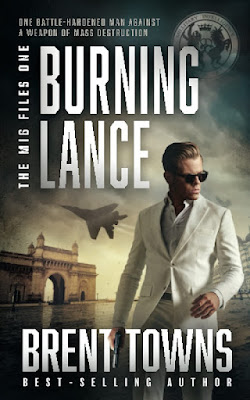In 1962, Michael Moorcock was an assistant editor on the Sexton Blake series, then published in digest-sized paperbacks. He also wrote one of the novels, CARIBBEAN CRISIS, which was revised somewhat by editor W. Howard Baker and published under the house name Desmond Reid. Moorcock was somewhat less than pleased by Baker’s revisions and departed his editorial position soon after. Now, more than 60 years later, he and Blake expert Mark Hodder have reconstructed and expanded the original version by approximately 10,000 words. The new version will be published next fall, in a double volume along with a completely new Sexton Blake novel by Moorcock and Hodder. I definitely plan to read both novels.
But in the meantime, what about the version of CARIBBEAN CRISIS published in
1962 as by Desmond Reid? Well, for a long time, it’s been one of the most
sought-after Blake novels because of Moorcock’s involvement. Through the help
of a friend, I was able to read the novel, which I did now so there’ll be a
long enough gap before I read the revised version later this year. I’m happy to
report that it’s a pretty entertaining yarn.
It has a great opening in which two men venture into a deep trench in the
Caribbean in an experimental bathysphere that’s lowered from a research ship.
They run into trouble that causes one of the men to scream in terror and plead
for them to be brought back up. But the cable attached to the bathysphere
breaks and the thing sinks in water too deep for it to ever be recovered.
Only it doesn’t. It happens to land on a ledge that’s still close enough to the
surface that a man in a diving suit can get down to it. When he does, he looks
through the bathysphere’s window and makes a startling discovery: One of the
men inside has been murdered, stabbed in the back. The other is missing. That’s
right, it’s a locked bathysphere mystery . . . and who better to solve it than
Sexton Blake?
Luckily, Blake is headed for the nearby island nation of Maliba (a fictional
but real-sounding country, to quote WHAT’S UP, TIGER LILY) where a revolution
is brewing as rebel reformers try to overthrow the oppressive government.
However, British Intelligence believes that the reform movement has been
infiltrated by Communist agents, and since Blake has done some favors for the
British spymasters in the past, he’s tasked with locating a list of Communist
infiltrators, as well as finding the missing son of a wealthy British sugar
cane plantation owner. Hmm, could all three of these cases somehow be connected?
CARIBBEAN CRISIS is a lot of fun. The setting is vividly rendered, and the
action races by. Blake does a good job of untangling everything, acting on his
own this time. Paula Dane and Marion Lang appear briefly, Tinker is mentioned,
and there’s no sign at all of good old Pedro. The impossible crime aspect of
the plot gets set aside for much of the book in favor of political maneuvering
and various double-crosses, but when Blake does get around to solving it, the
solution is both believable and satisfying, if not as extraordinarily complex
as what you get in the typical John Dickson Carr novel.
I’m looking forward to reading the restored and expanded version by Moorcock
and Hodder, which should be a lot closer to Moorcock’s original intentions.
However, I enjoyed this original published version, too, and am glad I got a
chance to read it.





.jpg)













.jpg)

.jpg)


